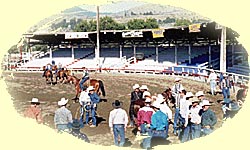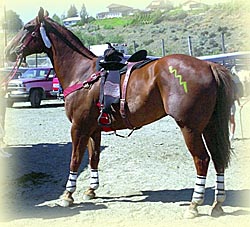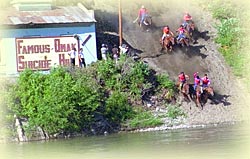|
Omak Rodeo Native cowboys from the Plateau frequently competed, and won, at Calgary, Pendleton, Yakima and Ellensburg, but they had a famous stampede in their own region — the Omak Suicide Race and Stampede. Stock contractor Leo Moomaw, from the Colville Reserve, and his partner, Tim Bernard, are among its founders. The first Omak Stampede was held in 1932 at the local high school. There was no fence, no gate and no means of collecting admission fees. Today, part of the stampede grounds and the Native Village are on the Colville Reserve, and the Native community works closely with the city in planning the annual event. The Suicide Race, or Mountain Race, was introduced in 1935 as a special attraction. Riders must scramble down a hill that plunges 69 m to the river, then cross the river to the finish line in the centre of the rodeo arena. The competitors are all from the Native community and many of them have won several times.
page 1 | page 2 | page 3 | page 4 | page 5 | page 6 | page 7 | page 8 Introduction | What makes Native Rodeo Different? | History of Rodeo Associations | Rodeo Heroes | The Rodeo Arena | The Rodeo Circuit | Rodeo Events | Down the Road SACRED BEINGS | RANCHING | ENTERTAINMENT | RODEO | ARTS AND INDUSTRIES |



